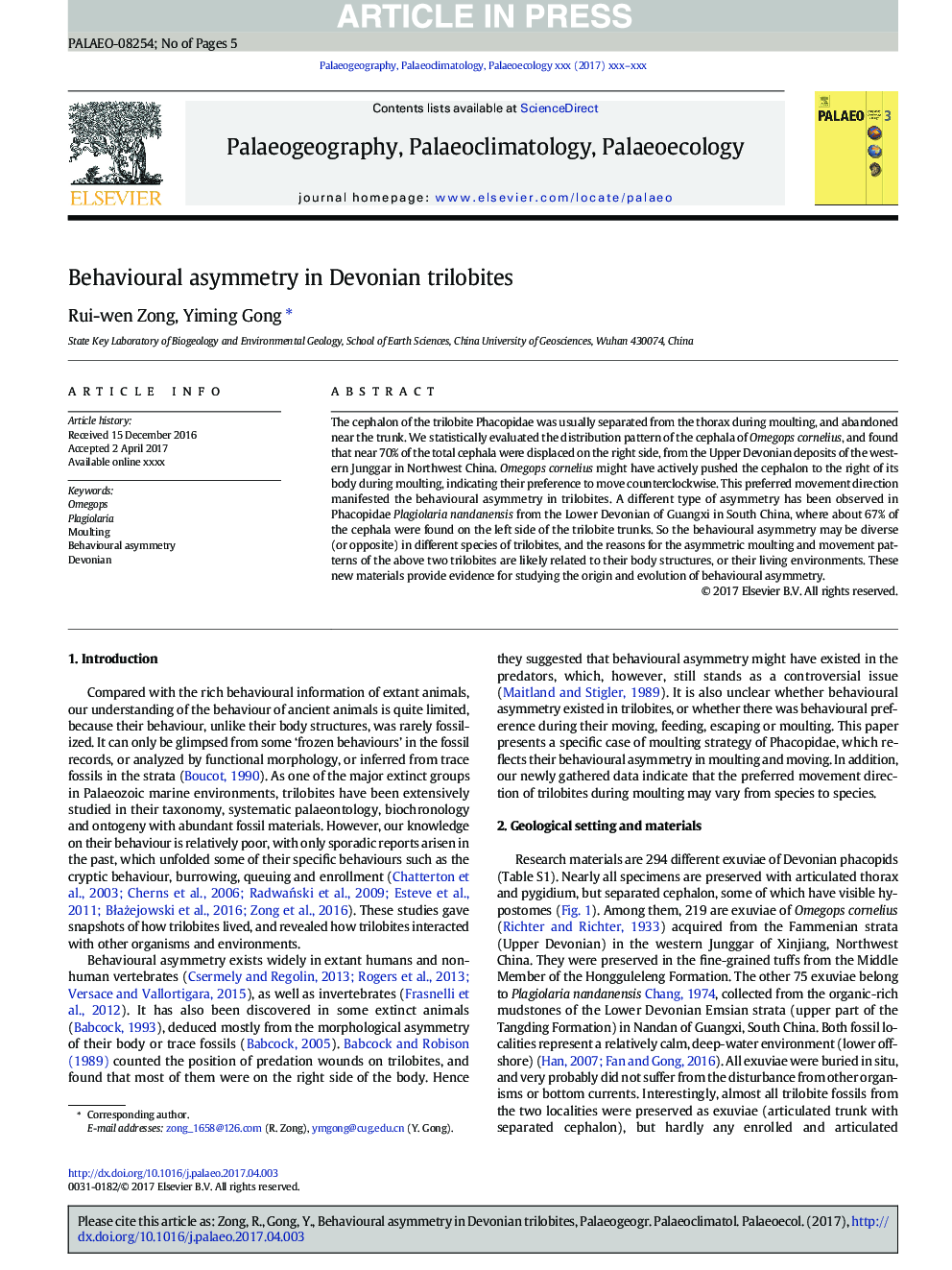| Article ID | Journal | Published Year | Pages | File Type |
|---|---|---|---|---|
| 5755892 | Palaeogeography, Palaeoclimatology, Palaeoecology | 2017 | 5 Pages |
Abstract
The cephalon of the trilobite Phacopidae was usually separated from the thorax during moulting, and abandoned near the trunk. We statistically evaluated the distribution pattern of the cephala of Omegops cornelius, and found that near 70% of the total cephala were displaced on the right side, from the Upper Devonian deposits of the western Junggar in Northwest China. Omegops cornelius might have actively pushed the cephalon to the right of its body during moulting, indicating their preference to move counterclockwise. This preferred movement direction manifested the behavioural asymmetry in trilobites. A different type of asymmetry has been observed in Phacopidae Plagiolaria nandanensis from the Lower Devonian of Guangxi in South China, where about 67% of the cephala were found on the left side of the trilobite trunks. So the behavioural asymmetry may be diverse (or opposite) in different species of trilobites, and the reasons for the asymmetric moulting and movement patterns of the above two trilobites are likely related to their body structures, or their living environments. These new materials provide evidence for studying the origin and evolution of behavioural asymmetry.
Related Topics
Physical Sciences and Engineering
Earth and Planetary Sciences
Earth-Surface Processes
Authors
Rui-wen Zong, Yiming Gong,
